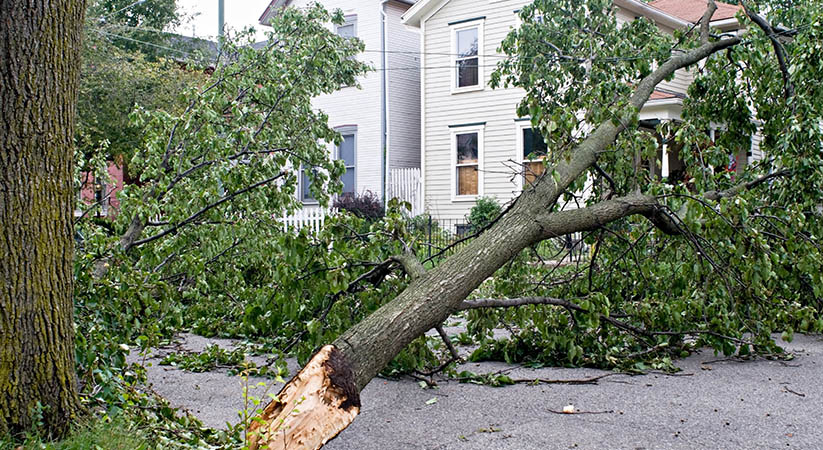It is common to have injuries in the workplace especially if the industry is blue-collar were contractors need to do manual labor. For instance, a tree removal task because it normally requires a person to climb a tree no matter what the height of the tree is and using heavy and dangerous equipment such as a chainsaw. Emergency tree removal is only a job for the trained professional, and it is a little more challenging and expensive to remove a tree once it hit a structure. This is why it is important to remove a tree even if it is just 1.
About the tree removal Injuries
Types of injuries
- Getting struck – Based on research, the tree accident that happens most often is when a fallen object falls on the person. In the majority of cases, the object is either a limb or a tree.
- Falling – This is also a common type of accident in tree cutting because the one trimming the tree can fall off the ladder, off the roof, or out of the tree if they are trying to access the limbs by climbing to the top of the tree with no safety harness.
- Cuts – These are also common injuries in tree removal services because a person might be using the cutting equipment properly like chainsaws or while they are using manual tools like a hacksaw.
- Poisoning – Plants such as the poison ivy, poison sumac, and poison oak may be in the tree. These plants can be hard to identify because their leaves easily blend in with tree leaves. Any kind of exposure to poisonous plants may lead to dermatitis, infection, blistering, and extreme case of allergic reaction.
- Scrapes – Tree barks that touch the bare skin may cause scrapes. In certain cases, wood splinters may go into the skin. The development of infections may be caused by dirt if it enters the open wound.
- Eye injuries – While the person cuts the tree, the chips and sawdust fly. They can enter a person’s eyes and lead to damage which includes abrasions in the cornea, eye cuts, and scratches. Eye injuries could also come from falling limbs or sawdust from the chipper.
How to avoid getting injured while tree trimming
- Don’t choose to work on trees and limbs located near power lines. It is better to assume that power lines are always hot and stay away from them as much as possible.
- If the weather is dangerous, do not think of having a tree removed. Rainy, windy, icy, or hot or cold weather conditions could add to the risk of tree work. It is better to plan it for another day because trimming projects should be done on dry, calm, and mild days.
- Thoroughly inspect the tree before proceeding with the cutting job. Check if there are split and broken branches and see if there are breaks and cankers in the tree trunk. You need to make sure that the tree is stable enough for the work that is about to happen. Furthermore, look for animal and insect life signs in the tree and around it.
- Use proper method in doing the job and never look away from the branch you are trimming. There are branches that might fall anytime soon so look out for those. Regular tree trimming will maintain your trees shape for years, which adds beauty and more value to your land while they are growing.
- The chainsaw teeth should be properly sharpened and the blade has to be lubricated using chain oil and bar. Moreover, constantly adjust and check the blade to maintain the right tension on the chain so it does not lift from the blade and ensure efficient cutting action.
- The coworkers and bystanders should be at least 150 feet away from a falling tree and not less than 30 feet away from anyone who has a chainsaw to remove a fallen tree or limbs.
- It is important to use the right size of chainsaw for the job, and safety precautions like a chain brake, front and back hand guards, chain catcher, spark arrester, and stop switch.
It is best to choose from a list of decent tree removal services bethesda md to do the job for you and avoid injuries.

